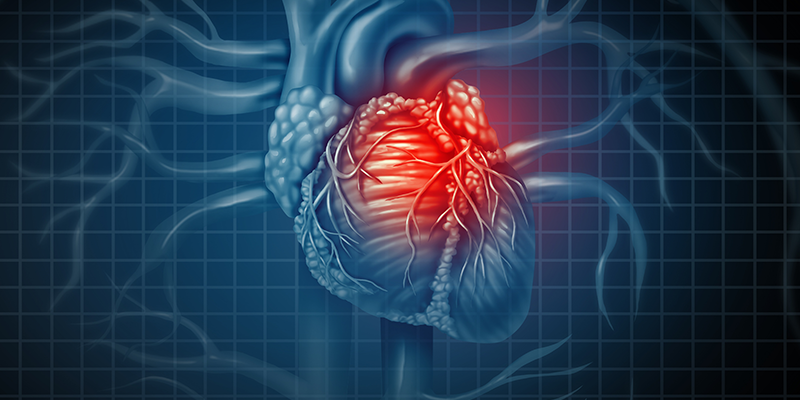
On January 2, people around the nation — be they football fans or not — were stunned by the live images from the Monday night football game, as the Buffalo Bills’ Damar Hamlin collapsed seconds after a tackle. Trainers soon began performing CPR, as it was later revealed the young player’s heart stopped twice on the field and he could not breathe without medical assistance.
While the full picture of what Hamlin suffered that night and, specifically, why it happened has yet to be revealed, the terrifying incident was perhaps the most public cardiac event in history and shined a spotlight on the heroic efforts performed in his treatment, including airway management. Indeed, there are significant links between heart conditions and the respiratory system.
How heart conditions affect the airway
The heart is the muscle that pumps blood around the entire body, but the lungs are where red blood cells becomes oxygenated, making a clear airway an intrinsic part of the cardiovascular system. Heart health, however, plays just as much of a role in how our lungs and airways perform. These are some of the heart conditions that can affect the pulmonary system and our breathing:
- Cardiogenic pulmonary edema: Heart-related fluid buildup in the lungs, or cardiogenic pulmonary edema, usually results from increased pressure in the heart (a symptom of heart failure) causing fluid to push through blood vessel walls into the lungs’ air sacs. People with pulmonary edema frequently are short of breath, have difficulty breathing, feel like they are suffocating or drowning, and cough up pink phlegm or frothy substance (the color likely due to blood).
- Heart attack: This occurs when a main artery to the heart is blocked. While laypeople may generally imagine a heart attack victim being in pain, grabbing their chest or shoulder, sufferers also become short of breath. As the heart labors to pump blood, breathlessness may continue. The sudden nature of heart attacks can also lead to vomiting or choking, depending on what the patient was doing when it began.
- Irregular Heart Rate: Arrythmia, or irregular heartbeat, is a catch-all term for several more specific conditions concerning either the speed or rhythm of the heart rate. Most of these conditions are often grouped by speed: tachycardia (a resting heart rate greater than 100 beats per minute) or bradycardia (resting heart rate less than 60 beats per minute). People who suffer from these conditions often are short of breath, and some may suffer sudden, sharp drops in blood pressure causing them to faint.
Given their strong connection, virtually any significant incident or chronic condition affecting the heart can greatly impact a patient’s respiratory system. Therefore, any patient suffering a cardiac emergency is likely to need some form of airway management. Whether their breathing stops, their oxygen supply is low, or they faint and/or choke on something that was in their mouth, measures to support their respiration, including suctioning and even intubation, may be required.
Airway treatment during cardiac emergencies
Multiple considerations come into play any time emergency medical personnel are managing airways, and extra care — and urgency — must come into play during a cardiac emergency.
- Assessment: Thorough airway treatment begins with a thorough respiratory assessment, including these steps:
- Identifying distress: Patients may be able to tell you they are struggling to breathe, but there are also many visual indicators. Vitals, level of consciousness, positioning, using accessory muscles and agitation are among the signs.
- Identifying patterns: Observe and document the patient’s respiratory pattern. If it changes, it’s a big sign that something may be amiss.
- Listen: Lung sounds, such as wheezes, crackles, rhonchi and stridor, can indicate an underlying disorder.
- Clearing the airway: While airway obstructions or excess fluids can occur from a cardiac event, sometimes an obstruction may trigger one. Any time airway maintenance is required, especially if CPR is necessary, the airway must be clear first. The right suction machine and accessories will make that task much easier and quicker. If intubation is required, remember the SALAD technique (Suction Assisted Laryngoscopy and Airway Decontamination) to prepare the airway.
- Oxygenating the patient: While bystanders who perform CPR are instructed to use mouth-to-mouth resuscitation, machine-assisted oxygenation is the best option, allowing responders to avoid coming into contact with potential infections, providing more control over the process (a machine ensures the patient is not receiving too much or too little oxygen), and affording better monitoring and performance amid the procedure.
- Concerns and risks: Suctioning is a vital part of airway maintenance, but responders must use care when performing the procedure because of potential complications, including trauma and hypoxemia. Critically, patients with cardiac arrythmias may see their conditions exacerbated during suctioning, so a tachycardic patient must be monitored closely. For this reason, consistent oxygenation, limiting suctioning to no longer than 10 to 15 seconds and visualizing the airway prior to suctioning is critical.
As we witnessed on live TV on a Cincinnati football field, cardiac emergencies are among the most stressful and, frankly, terrifying medical events that can occur. But keeping a cool head — as Damar Hamlin’s trainers did — and performing an able mix of treatments that include airway management can save lives.














